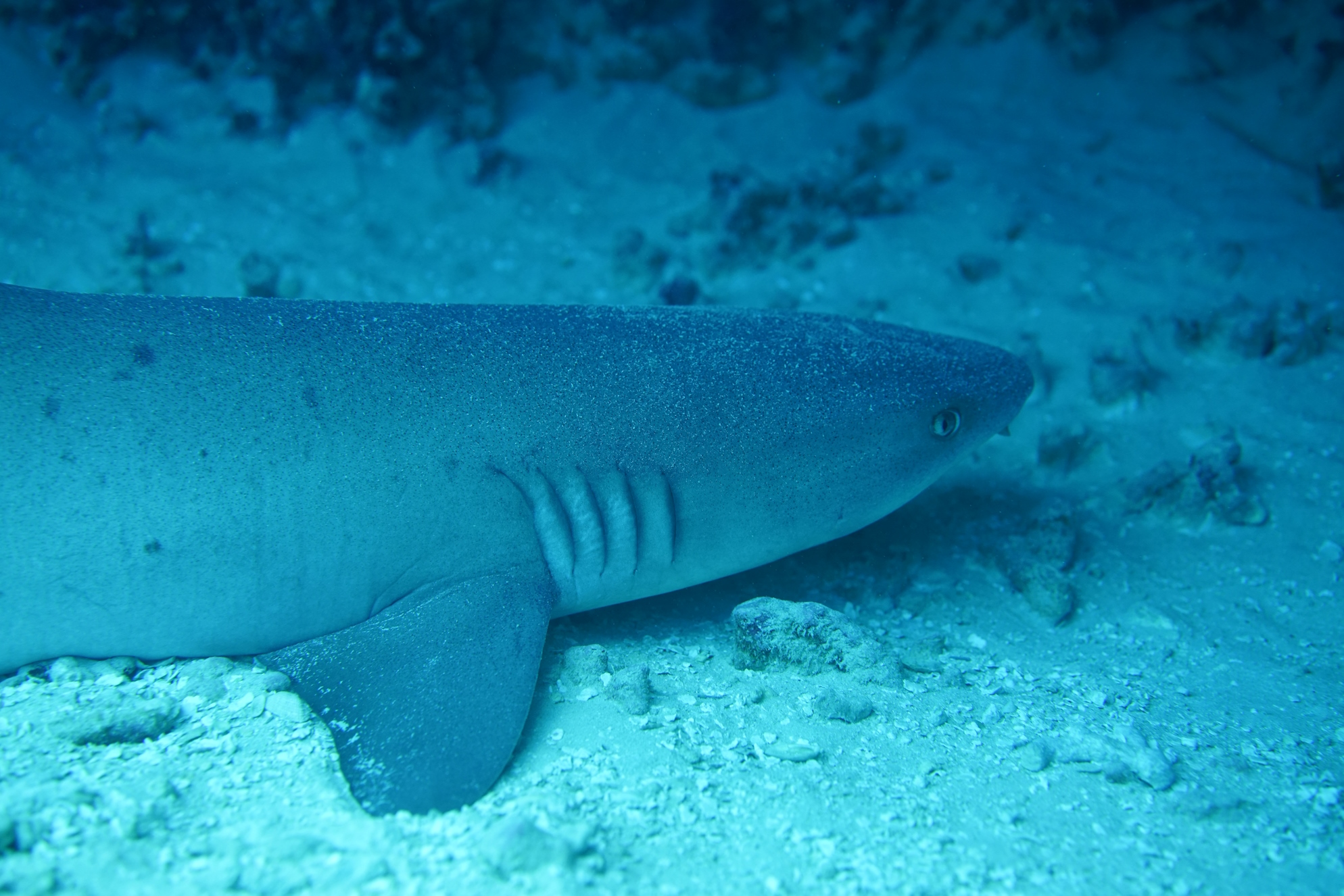Whitetip reef sharks (Triaenodon obesus) are fascinating and relatively common species of sharks found in the warm waters surrounding the Hawaiian Islands. Known for their distinctive white-tipped dorsal fins and graceful swimming style, these sharks are a captivating sight for divers and snorkelers exploring the vibrant underwater world of Hawaii. They are primarily found near coral reefs and rocky areas, where they take shelter during the day and become more active at night, making them a popular subject of nocturnal dive expeditions.
Whitetip reef sharks typically grow to an average length of 5 to 6 feet, with females generally being slightly larger than males. Despite their appearance and name, they are generally harmless to humans, displaying a timid nature and a preference for small fish, crustaceans, and cephalopods as their primary food sources. Their slender bodies and swift movements allow them to maneuver adeptly among the coral formations, making them effective predators in their marine ecosystem.
One of the most intriguing aspects of whitetip reef sharks in Hawaii is their social behavior. They are often observed in loose groups, known as “shivers,” resting together in caves or under ledges during the day. These aggregations can range from a few individuals to larger gatherings, sometimes exceeding twenty sharks. This social behavior may serve multiple purposes, such as providing safety in numbers, facilitating courtship, and potentially aiding in the exchange of information among the group.
While whitetip reef sharks have a relatively stable population and are not currently considered endangered, they still face various threats. Human activities, such as overfishing and habitat destruction, can significantly impact their delicate marine environment. Conservation efforts, including the establishment of marine protected areas and responsible tourism practices, are crucial to ensure the continued presence of these mesmerizing creatures in the Hawaiian waters for generations to come. As ambassadors of the oceans’ biodiversity, the protection of whitetip reef sharks also contributes to the overall health and balance of Hawaii’s marine ecosystems.



